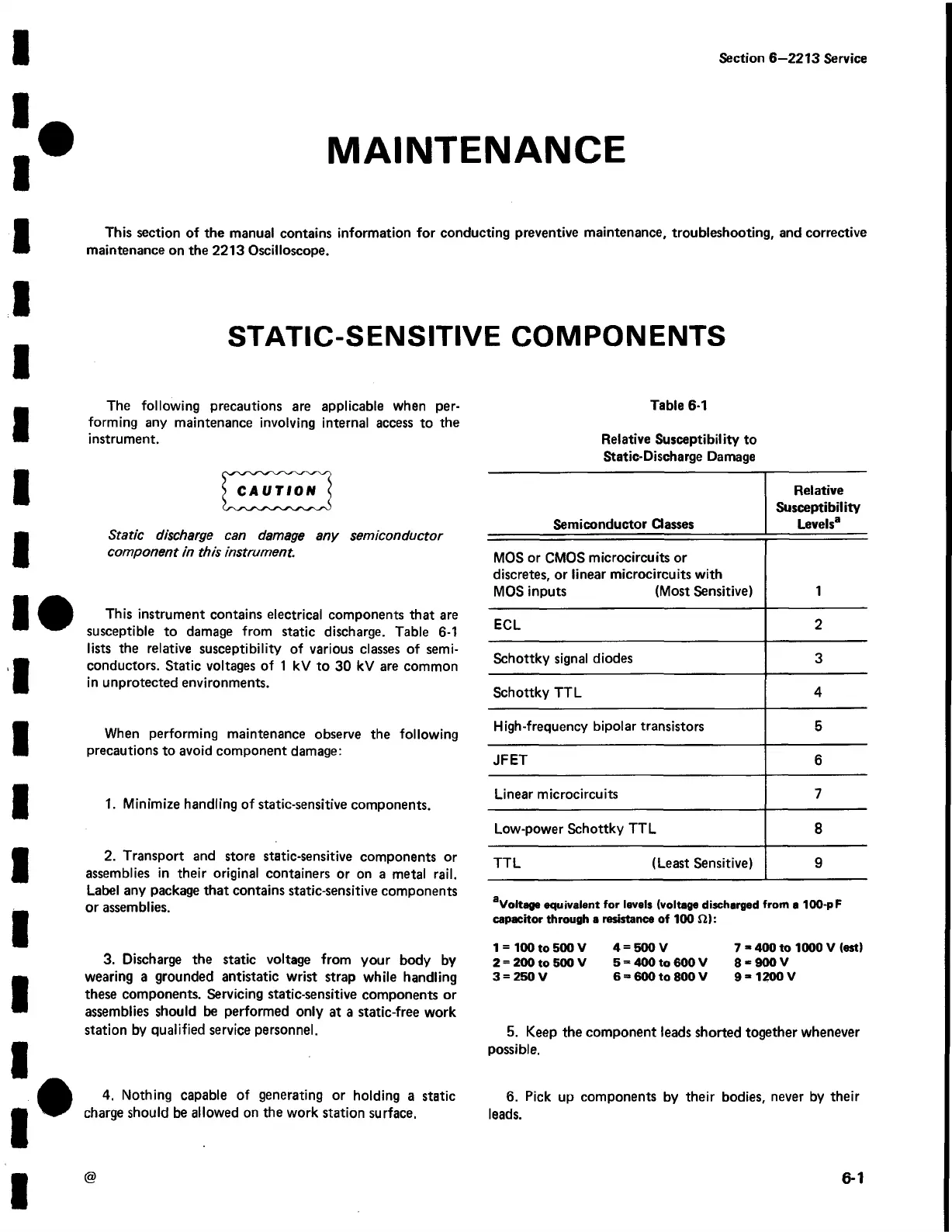Section 6—2213 Service
MAINTENANCE
This section of the manual contains information for conducting preventive maintenance, troubleshooting, and corrective
maintenance on the 2213 Oscilloscope.
STATIC-SENSITIVE COMPONENTS
The following precautions are applicable when per
forming any maintenance involving internal access to the
instrument.
> CAUTION <
Static discharge can damage any semiconductor
component in this instrument.
This instrument contains electrical components that are
susceptible to damage from static discharge. Table 6-1
lists the relative susceptibility of various classes of semi
conductors. Static voltages of 1 kV to 30 kV are common
in unprotected environments.
When performing maintenance observe the following
precautions to avoid component damage:
1. Minimize handling of static-sensitive components.
2. Transport and store static-sensitive components or
assemblies in their original containers or on a metal rail.
Label any package that contains static-sensitive components
or assemblies.
3. Discharge the static voltage from your body by
wearing a grounded antistatic wrist strap while handling
these components. Servicing static-sensitive components or
assemblies should be performed only at a static-free work
station by qualified service personnel.
4. Nothing capable of generating or holding a static
charge should be allowed on the work station surface.
Table 6-1
Relative Susceptibility to
Static-Discharge Damage
Semiconductor Classes
Relative
Susceptibility
Levels3
MOS or CMOS microcircuits or
discretes, or linear microcircuits with
MOS inputs (Most Sensitive)
1
ECL
2
Schottky signal diodes 3
Schottky TTL
4
High-frequency bipolar transistors 5
JFET
6
Linear microcircuits 7
Low-power Schottky TTL
8
TTL (Least Sensitive) 9
aVoltage equivalent for levels (voltage discharged from a 100-pF
capacitor through a resistance of 100 Si):
1 = 100 to 500 V 4 = 500 V 7 = 400 to 1000 V (est)
2 = 200 to 500 V 5 = 400 to 600 V 8 = 900 V
3 = 250 V 6 = 600 to 800 V 9 = 1200 V
5. Keep the component leads shorted together whenever
possible.
6. Pick up components by their bodies, never by their
leads.
6-1

